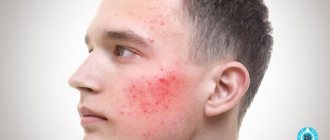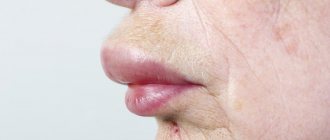Simulidotoxicosis is a toxic-allergic response to a midge bite. At the same time, hyperemia, swelling and itching appear on the skin.
The habitat of these insects is swamps, rivers and lakes. They reach 6-7 mm in length, the papule after the bite is quite large, since the midge bites through the skin, and its saliva contains a hemolytic substance. It is a carrier of infections, including: onchocerciasis (helminthiasis that affects the skin, lymph nodes and organs of vision), leukocytozoonosis, tularemia and anthrax.
Combats swelling, itching and redness
The main goal of treating a midge bite is to eliminate swelling, relieve itching and irritation. This can be achieved using pharmaceuticals or all kinds of folk methods. If trouble happens in nature, then some herbs can help; they are applied to the site of injury, or they are brewed and then the decoction is wiped over the area of swelling and compresses are applied to it.
Pharmacy ointments
After providing first aid to the victim, adequate therapy is necessary in the future. External agents containing antihistamines help get rid of swelling. You can apply such medications to the bite area only after washing the skin with water. Topical medications used for redness and swelling
| Drug name | Mechanism of action | Application Features |
| Gel Fenistil | An antihistamine that relieves itching and soothes the skin. | Apply the gel up to 4 times a day in a thin layer. The drug can also be used to eliminate the consequences of a midge bite in children over one month old. |
| Psilo Balm | Analogue of Fenistil in composition and mechanism of action. | The gel is applied to the area of edema and hyperemia 2 to 4 times a day. A child is allowed to smear the bite site with Psilo-balm only after two years. |
| Nezulin | Consists of plant components that have anti-allergic and anti-inflammatory effects. | Nezulin cream is approved for use from the neonatal period. The cream is rubbed into clean skin up to 4 times a day. Nezulin not only relieves itching and irritation, but also helps restore the skin. |
| Gistan | Contains herbal ingredients and vitamins. Relieves skin itching, prevents the development of infectious processes. | Can be applied to affected skin no more than 2 times a day. |
| Cynovitis | The cream contains zinc. The drug reduces the intensity of itching, reduces swelling, and has an antibacterial effect. | Apply to the bite area twice a day. Cynovitis can be used when treating a child if the baby is more than a year old. |
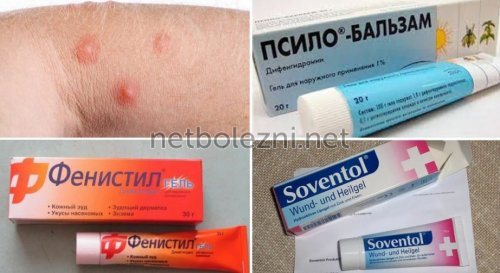
Pharmacy ointments are used until all disturbing symptoms disappear completely. Usually the effect of their use is noted already on the second day. But if the swelling does not subside, then you should additionally use antihistamines in tablets or capsules.
Folk remedies
At home, some remedies that you always have on hand do a good job of eliminating swelling. You can remove swelling and irritation with:
- Soda
. A paste is prepared from dry soda by mixing it with water, which must be applied to the damaged area. The procedure can be repeated every hour. - Products with menthol
. This can be toothpaste, you just need to anoint the bite area, or mouthwash, it is used for wiping. - Tea
. Cotton swabs are soaked in black or green tea and applied to the tumor site. It is advisable to apply compresses every 2-3 hours. - Essential oils
. Itching and irritation are well eliminated by lemon, tea tree, geranium, and mint oils. 5-7 drops of the selected essential oil should be dissolved in a spoon of olive oil and then lubricate the skin with the resulting product. - Potato
. Peeled potatoes are grated on a fine grater, and the resulting gruel is applied to the inflamed area. - Vinegar
. Table vinegar is diluted with water in a 1:1 ratio, gauze napkins are moistened in the resulting solution, after which they need to be applied to the swelling.

Folk remedies should be used as often as possible, since the decongestant and antipruritic effect of their use is not very long-lasting.
You can also relieve swelling with thick dusty foam. It is best to prepare it from laundry or baby soap. The foam is applied in a dense layer to the bite site and left until dry.

Relieving swelling with herbs
Plants such as plantain, chamomile, mint, string, and calendula have antipruritic and antiallergic properties. They can be used in two ways:
- Wash fresh leaves of plantain, mint or St. John's wort, lightly crush them in your hands and apply to the bite area;
- prepare a decoction, which can then be used for lotions.

A herbal decoction from any of the above herbs is prepared at the rate of 3 tbsp. spoons per glass of boiling water. It is best to use a thermos for infusion. In an hour, the healing solution will be ready; it is filtered and used for compresses and rubbing.
Parsley has antipruritic properties. A bunch of garden greens should be washed, mashed until the juice appears, wrapped in gauze and applied to the tumor.
Traditional methods of treatment
After a midge bite, treatment, which involves removing swelling, and when the bites itch and are accompanied by itching, use the following recipes:
- attach a cloth, moistening it in a solution of water and vinegar in a ratio of 1:1;
- lotion - a large spoon of soda is dissolved in 250 ml of water, gauze is moistened and fixed on the bite;
- swelling can be eliminated by applying low-fat sour cream or yogurt to the bitten area;
- Compresses made from fresh parsley juice will help;
- applying onion pulp or cabbage leaves;
- use toothpaste containing menthol or mouthwash;
- make an infusion of honey and geranium - dissolve a tablespoon of honey in 250 ml of water, then add geranium flowers. A day later, the infusion is ready for use. They lubricate the bitten areas and wash the eyes;
- make compresses from black tea, boiling chamomile and rose hips;
- to disinfect swollen areas, use a solution of salt diluted in water - a teaspoon per 250 ml is required;
- washing the bitten area with a solution of laundry soap, also making lotions;
- Grated potatoes are applied as a compress to the wound.

parsley juice
It is important to remember that folk recipes are only an addition to drug treatment.
What to do after being bitten by a mosquito
In most cases, possible swelling as a reaction to mosquito bites can be prevented by properly performed manipulations. If you do not want you or your child to have a swollen mosquito bite, then immediately after the insect injures the skin, you need to take several actions:
- Wash the bite site with cold water and soap, and if possible, apply ice in a gauze pad for 15-20 minutes. These activities remove dirt from the skin and prevent the development of an inflammatory reaction.
- After an ice compress, the wound area is treated with aseptic solutions, plant juices, and various remedies based on folk recipes.
- Treatment must be carried out several times a day, especially if the bite on the skin is very swollen, itchy and does not go away in the first hours.
It is necessary to explain to the child that the wound should not be scratched, as this will lead to infection and long treatment. If you have multiple bites, you can take a warm shower or bath up to several times a day.
If not only a local, but also a general reaction of the body in the form of an allergy develops against the background of a bite, it is necessary to approach treatment a little differently. The use of external agents is also necessary, but in addition to this, treatment must also be carried out with antihistamines. Oral anti-allergy medications not only relieve swelling on the skin, but also normalize overall well-being and prevent the intolerance reaction from progressing to a more severe stage. Among antihistamines, a child can be given medications such as Suprastin, Tavegil, Diazolin, Claritin, Zyrtec; Fenistil drops are suitable for children under one year of age. It is imperative to follow the dosage of the drug, usually these medications are given for several days, but if you see that the swelling does not go away after one or two days and, moreover, is increasing, then you need to show the baby to the pediatrician. If an allergic reaction to a mosquito bite manifests itself as increasingly severe symptoms, medications are administered by injection by a medical professional.
Means for lubricating mosquito bites to prevent swelling can be divided into two groups: pharmaceutical preparations and folk recipes. Usually, at the time when you notice that your child has a swollen bite on his body, there are no special medications at hand, so treatment begins with improvised means. The following methods can be used to prevent the development of a severe reaction on the skin:
- Soda solution. A spoonful of regular soda should be diluted in half a glass of water and lubricated with this solution on the growing swelling. You can also make a paste out of soda; apply it to the bite site until it dries completely.
- Alcohol, cologne, alcohol wipes are another way to prevent the development of itching and swelling.
- For swelling of the eye or eyelid, it is good to use the juice of plantain, dandelion or cabbage leaf. The leaves of these plants need to be washed, kneaded well and applied to the desired location.
- Onions have a calming property. Its slice needs to be held for several minutes where the mosquito bite is swollen. You just need to make sure that this area is not combed.
- A plant such as celandine relieves swelling and severe itching; you need to squeeze the juice from its stems and treat the wound with it. Celandine juice also has disinfecting properties, that is, it prevents infection.
From pharmaceutical preparations, it is necessary to use those that contain anti-inflammatory, antihistamine and soothing components. Fenistil gel helps well against skin allergies; it can be used by both adults and children. Preparations based on herbal components - Nezulin Cream, Psilo Balm - do not have a toxic effect on the body. You can use Cyclodem to relieve swelling in children. Hormonal ointments for edema are used in cases where conventional means do not help and they should not be used for a long time.
If a child has a repeated severe allergic reaction to mosquito bites, he or she should be shown to a doctor. A possible cause of allergies can be not only a predisposition, but also other disorders in the body. These include helminthic infestations and impaired functioning of the immune system. If these pathologies are eliminated by taking special medications, then allergic reactions will be less of a concern.
A child suffering from mosquito bites must be additionally protected from the effects of these insects. Special children's repellents, folk remedies for mosquitoes, and wearing protective clothing will help with this. Fumigators must be used indoors.
Folk remedies to eliminate external signs of the problem
1.Soda.
The bite can be rubbed with a solution of soda; for this, dilute 0.5 teaspoon of soda in 1 glass of water and wipe the affected areas. You can also make soda porridge and apply it to the bite site.
2. Toothpaste.
Lubricate the bite site with any toothpaste containing mint or menthol.
3.Ammonia.
An effective remedy for relieving itching and burning from the bitten area.
4. Laundry soap.
Brown 70% category 1 soap for household purposes perfectly eliminates unpleasant symptoms.
5.Vinegar and salt.
The components are mixed in equal quantities with water and the bites are wiped off. You can simply moisten cotton wool with a vinegar solution and apply it to the damaged area for 20-30 minutes.
6.Medical alcohol.
It is also quite an effective product; it is simply applied to the affected areas of the skin.
7.Dandelion.
The leaves of this well-known medicinal plant are plucked and applied to the bite, covered with a band-aid.
After 3 hours, the procedure is repeated using a new sheet. The effect will come faster if you wash the bites with a decoction of Veronica officinalis. 8. Onions.
The vegetable helps not only with colds and runny nose, but also with such problems as bite allergies. By tying half an onion to the damaged area, you can relieve swelling and reduce pain.
9.Plantain.
Fresh plantain leaves are crushed and applied to the bite, securing with a bandage.
Medicines are used if a serious allergic reaction develops. The most effective for this problem are:
- "Claritin";
- "Diazolin";
- "Diphenhydramine."
If a person discovers signs of an allergic reaction to a midge bite, he should take one of these medications and immediately consult a doctor.
Allergy to midges is a rather serious and dangerous problem; delay and self-medication can be fatal. You shouldn’t tempt fate; it’s better to take the necessary measures right away.
In the summer, midges cause a lot of problems and inconveniences not only for allergy sufferers, but also for people with stronger immune systems. If you have a tendency to allergic reactions, you need to find out in advance how an allergy to midge bites manifests itself, what symptoms it has and how it can be treated. You can find answers to these questions, as well as see photos of allergies to midge bites on the bodies of children and adults in this article.
First aid
Providing timely assistance to the victim after an insect attack can reduce the feeling of itching, relieve swelling of the skin, thereby returning the skin to its original appearance.
When bitten, a number of manipulations are carried out.
- Rinse the wound under a stream of cold water.
- Treat with an antiseptic drug - alcohol, furatsilin.
- Cover the wound area with gauze and apply ice.
- Apply pressure to the bitten area with your fingers for two minutes.
- Take an antihistamine and drink plenty of fluids to flush out toxins faster.
After the procedures, the bitten area is lubricated with vinegar, an antihistamine or soda solution. It is also necessary to monitor the patient’s well-being and the bitten area.

soda solution
To understand why the bite area itches and swells so much, you need to know how a midge bites. Unlike other parasites, midges do not bite, but cut off the skin layer, which is why the injuries become large and shallow. The threat from her comes not from the way she bites, but from the consequences of the injuries caused. The toxicity of insect saliva is due to its origin.
Danger level
Many people know from their own experience what an allergy to midge bites is. The main symptom is severe irritation and swelling of the skin. It's all about the insect's toxic saliva, which penetrates the victim's body as a result of a bite. Midges bite people a little differently than mosquitoes. To begin, they use their highly developed jaws to pinch off a small portion of the top layer of their prey's skin. Immediately after this, they lubricate the resulting wound with saliva containing toxic substances. Plus, saliva has an anesthetic property, which is why a person is not able to feel the bite and kill or drive away the insect.
After some time, a noticeable and very unpleasant itch appears at the site of the bite. On average, it can last from several days to several weeks. Much in this case depends on the individual characteristics of the human body and its skin. Due to severe itching, many people scratch the wound, which creates a risk of infection. Such problems are often encountered by young children who cannot tolerate unpleasant sensations. If the wound is infected, purulent inflammation subsequently develops on the skin. If this happens, it is better to immediately seek help from doctors. Otherwise, inflammation can cause an even more dangerous disease.
Relieving inflammation
Treating the wound with soapy water. It is advisable to use 72% laundry soap. Lubricate the irritation with any antiseptic
It is important to ensure that this product does not get into the wound itself. 2 hours after applying the product, lubricate the wound with ointment (levomekol, you can even use Vishnevsky ointment). It is recommended to lubricate the wound at night. After a while, as the ulcer formed after the bite begins to heal, you can begin to make lotions
Flocks of herbs (chamomile, sage, etc.). Wet a cloth with the solution and apply it to the wound.
Important point.
If irritation begins to worsen, consult a doctor. Of particular concern should be the appearance of black spots on the skin.
Treatment of swelling and itching depending on the complexity of the disease
Multiple bites from midges are distinguished not only by unpleasant symptoms for humans, but also by their rather long-term resistance.
Bite marks, itching, and swelling last to varying degrees in some victims for up to three weeks.

And this is mainly observed when a person does not take any measures to block the development of an allergy to a midge bite.
The approach to treating and eliminating all changes on the skin when an allergic reaction to a midge bite occurs should always be comprehensive and consistent.
If an allergy after a mosquito bite develops according to a typical scenario, then all the changes appear one after another.
First, after a bite, rashes form, then itching and scratching, infection of the wound surface and inflammation of the area of the body with the bite.
The stages of the treatment process must correspond to the nature of changes in the skin:
- Immediately after the bite, the affected area should be washed with plenty of water. And it is best to use regular laundry soap to wash your skin. The skin is dried with a soft cloth, it should not be rubbed, then the bite should be pressed well with your fingers for 3-7 minutes. After pressing, the bite area is treated with one of the currently available antiseptics - Furacilin, Chlorhexedine, Miramistin, or alcohol mixed with water. In case of severe pain, you need to take an anesthetic (Paracetomol, Ibuprofen), and an antihistamine to relieve an allergic reaction.
- For rashes, which usually form on the skin after a few hours, you need to apply soda compresses. A solution for lotions is prepared from a teaspoon of dry soda and a glass of warm water. The rash can be wiped with ammonia. If antihistamines have not yet been used, then at the stage of the appearance of rashes one of them should be taken.
- Itching is eliminated by applying antipruritic external agents to the skin - ointments, gels. You should refrain from scratching the bite site. If it is not possible to immediately apply the ointment, then cover the wound surface with a damp bandage with 0.5% novocaine, a semi-alcohol solution, or furatsilin.
- To prevent the development of inflammation, scratches should be treated with ointments with antiseptic components - Tetracycline, Levomikol, syntomycin emulsion, Oflocaine, Betadine. Lotions with boric acid help prevent further scratching of the skin. According to indications, the doctor at this stage may prescribe ointments with glucocorticosteroids - Sinaflan, Advantan, Hydrocortion.
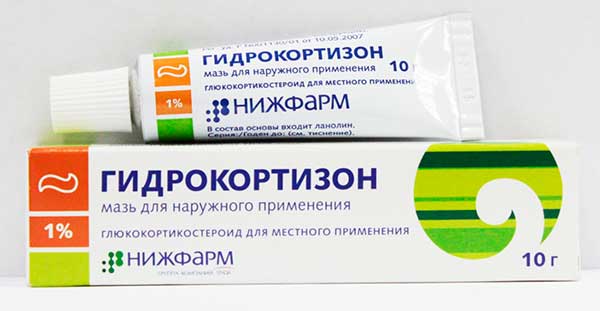
- If the wound becomes infected, it should be washed daily using a soap solution. After this treatment, 3% peroxide, Decasan, and Chlorhexedine are additionally used. After disinfecting the wound surface, apply a bandage with Levomekol, Levosin, Tetracycline, Oflocaine. If infection is accompanied by fever or increased redness, then antibacterial therapy is required. Azithromycin and Augmentin are usually prescribed for several days.

- When a black scab appears on wounds, surgical treatment is required with thorough cleaning of the wound and removal of pus from it. Antiseptics are also used for rinsing, bandages with antibacterial agents are applied, and the area of skin redness is lubricated with one of the hormonal ointments. The use of antibiotics is mandatory.
- At the wound healing stage, it is necessary to wash it every day using antiseptics. After drying the skin, ointments with regenerating properties are used - Bepanten, Cynovit, Panthenol, Solcoseryl, Actovegin.

POPULAR WITH READERS: Allergic laryngitis, symptoms, treatment
How to treat: tablets, ointments, gels to relieve itching, swelling, redness
Drug treatment of the affected area after a midge bite is as follows:
- Taking painkillers and allergy pills. You can use Nurofen, which will reduce unpleasant symptoms, relieving pain. In addition, the use of Suprastin, Fenistil, Claritin, Zodak and Cetrin is indicated. These antihistamines can reduce the symptoms of itching and burning and eliminate swelling. Their use is necessary in the first 3 days after the incident.
- Applying Sudocrem or Levomekol to the skin, which promote rapid healing and relieve inflammation. Repeat the procedure 2 times a day for 5 days.
- Use of glucocorticosteroids. A few hours after the bite, you can apply Hydrocortisone or Dexamethasone. Such compositions quickly relieve swelling in the area of localization of inflammation and eliminate allergy symptoms. It is also recommended to use such creams at least 2 times a day for 3 days.
Fans of folk remedies can use the following recipes:
- Wash and peel fresh potatoes. Grate the tuber and apply the resulting pulp to the affected area, leaving for 20 minutes. Then you can treat the bite with any antihistamine cream. You need to repeat the procedure every day until the inflammation decreases.
- Dilute 1:1 water and 6% vinegar. Apply lotions 2 times a day for 15 minutes, using gauze folded several times. The course of treatment is 3–4 days, depending on the nature of the edema.
- Add to 1 tbsp. l. vegetable oil 3 drops of mint essential oil. Moisten a cotton pad generously and apply to the affected area for 10 minutes. Repeat the procedure after 2 hours. This method is especially effective in the first 2 days.
Under no circumstances should you heat the bite area until it heals. And for the first 3-5 days, limit yourself to showers, avoiding hot baths. Under no circumstances should you scratch the bite site. If an infection occurs, the wound can become very swollen and fester.
How to avoid allergies?
Midges always attack unexpectedly. Therefore, when going on vacation in nature, especially near bodies of water or standing water, you need to think about the safety of your family:
- Take mosquito repellent sprays and ointments with you.
- It is better to wear closed clothes, such as jeans and a shirt, in dark colors.
- If you are prone to allergies, take a drug with an antihistamine effect.
- Protect your face with a hat with a mosquito net.
- The midge is guided by the smell of sweat and perfume, so it is necessary to wash more often.
- Prepare a cream that will repel midges. This insect is afraid of the smell of vanillin. You need to take a bag of vanillin and dilute it in 10-15 ml of water. Apply the resulting mixture to exposed skin.
- It is also known that midges cannot tolerate the smell of geranium. Therefore, Rihitol-A based on the natural essential oil of this plant will be effective. It repels insects well and also heals bites.
- Clove oil is a good insect repellent. You need to chop the cloves, add them to vegetable oil and let it brew for 2 days. Then apply the oil to exposed skin.
What you can do at home:
- Use fumigators or use a folk recipe based on formaldehyde. Take 2 tablespoons of formaldehyde, 5 tablespoons of water with sugar. Mix thoroughly, pour into a saucer and leave in the center of the table. After some time, the insects flock to this liquid and die.
- Install mosquito nets on the windows.
- It is difficult to convey to a child that he should not scratch his skin, so you need to cut his nails short.
Anaphylactic shock after a wasp or hornet sting. What to do?
As already mentioned, anaphylactic shock is the most dangerous consequence of an insect bite. According to statistics, it is most often provoked by medications, followed by food allergens (honey, peanuts, seafood, etc.). However, a certain percentage of cases also involve insect bites.
The greatest likelihood of getting anaphylactic shock is from the bites of wasps and hornets, since they can inject poison repeatedly. In addition, it is much stronger than that of bees. The most typical manifestations of anaphylactic shock:
- Drop in blood pressure;
- Bronchial spasm and suffocation.
However, it can all start as a typical allergic reaction:
- skin redness and rashes;
- cough, nasal congestion and sneezing;
- weakness and dizziness;
- swelling of the eyelids and lips.
Further symptoms develop rapidly: it becomes difficult for the person to inhale and exhale, and he loses consciousness.
If you observe anaphylactic shock in a victim, immediately call ambulance 103 or 112. The further course of action should be as follows:
- move the victim to the shade and provide fresh air;
- remove outer clothing, lay on side;
- apply a tourniquet above the bite site, cool the bite site with ice or cold water. The tourniquet can be applied for no more than 25 minutes, periodically loosen it and move it higher or lower;
- urgently administer epinephrine (adrenaline) intramuscularly. Always keep a syringe tube with the drug in your first aid kit if you live outside the city! If bronchospasm does not go away after 15 minutes, the drug should be re-administered. You can inject into any muscle;
- if breathing stops, start cardiopulmonary resuscitation: 30 chest compressions + 2 mouth-to-mouth or mouth-to-nose breaths.
IMPORTANT! If the attack is controlled, the victim still needs hospitalization. According to statistics, in one out of five cases, anaphylactic shock develops in two stages
The second attack can occur 6 to 12 hours after the first, so the victim should be under medical supervision.
Symptoms of the disease
As a rule, the midge attacks suddenly, and it is almost impossible to notice its bite, since a light anesthetic is released along with the insect’s saliva. In the case when a person does not notice the midge, it digs into the skin, sucking out the blood and lymph that it needs to continue its life.
An allergic reaction is quite dangerous and can develop in three stages:
Local reaction
It manifests itself as pain directly at the site of the bite, where there is severe swelling and redness. Swelling may spread to nearby areas, for example, if the bite site is localized in the hand area, the forearm may swell.
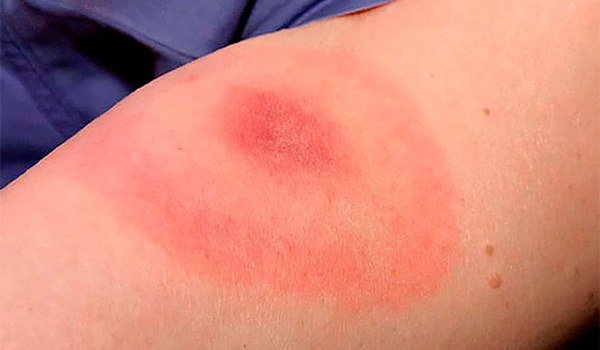
This reaction may be short-lived, but its occurrence is a reason to contact an allergist. The most dangerous areas for insect bites are the face, neck and head. Even with a local reaction of the body in these places, a midge bite can be fatal for an allergy sufferer, since sudden swelling in the neck can impair respiratory activity.
Moderate reaction
It is characterized by increased weakness of the patient and severe pain in the area of the midge bite. In addition, the bite site may become red and hot to the touch. Hyperemic rashes all over the body, accompanied by severe itching, are possible. In some cases, nausea and vomiting may occur.
Acute reaction
Appears suddenly and is characterized by difficulty breathing, shortness of breath and increased heart rate. Dizziness, confusion, anxiety and a sharp drop in blood pressure are quite common.

In severe cases, angioedema and loss of consciousness are possible.
It is important to note that an allergic reaction is possible not only to an insect bite, but also to all its metabolic products (particles, secretions, scales, etc.). The faster an allergy manifests itself, the more dangerous it is and the sooner it is necessary to carry out emergency treatment measures.
If a midge is caught by surprise, what to apply to the wound, what plants can be applied
If you are in the forest or in the country, then you may not have the necessary means at hand to help cope with the consequences of midge bites. If trouble takes you by surprise, far from pharmacies, do the following:
- rinse the bite sites with any available clean fresh water - from a spring, river, drinking from a bottle is best;
- treat bites with vodka or vodka solution;
- Apply a thin layer of any cooling menthol-based ointment or mint toothpaste to the affected area, avoiding open wounds;
- You can use useful plants that you find nearby: dandelion, plantain, parsley, white cabbage. Wash the leaves, grind them into a pulp to form juice, apply to the bite site, securing with a bandage; Dandelions growing everywhere will help relieve inflammation
- Cut the onion head in half and apply it to the problem area.
Eye damage
An unpleasant feature of a midge bite is that, given the small size of the insect, it can penetrate the ears, nasal cavity, and often bites the lip or eye. The latter cases are especially dangerous to health - if not treated correctly, damage to the eye membranes can lead to loss of vision. Therefore, it is necessary to contact a specialized doctor (ophthalmologist), who will prescribe the necessary medications. Pre-medical first aid measures consist of the following actions.
- Rinse eyes with running cold water.
- How to relieve swelling if a midge has bitten your eye? It is necessary to lubricate the eyelids with ointment against allergic manifestations (Hydrocortisone, Fenistil Gel), avoiding getting it into the eyes.
- Apply a cold compress.
What to do if a child is bitten by a midge and his eye is swollen? If the bite is in the eye area - eyelid, eyebrow, cheekbone, then the bite is treated in the same way as in other cases: washed, cooled, disinfected and lubricated with anti-inflammatory cream.
Symptoms of an insect bite
Midges release the chemical into the bloodstream as they feed on blood. This process can be expressed by scabies, redness and swelling. Symptoms intensify over time. Damage may be accompanied by the release of clear fluid.
The sting of a midge can provoke the appearance of several uncomfortable manifestations on the skin, namely:
- Severe itching that occurs after several hours. This is the primary sign of an allergic reaction;
- Manifestation of redness. This manifestation can be reflected by simple redness, but in some people it manifests itself as the appearance of red bumps, which is most often encountered by people with hypersensitive skin;
- The most dangerous and unpleasant manifestation is swelling, which can also occur due to skin hypersensitivity. If this occurs, you should consult a doctor to prevent various complications. For example, various skin inflammations or dermatitis.
- Blisters. Such manifestations do not occur in everyone, but still, they can be a consequence of a midge sting. In such cases, you should also seek medical help.
- When an insect bite occurs, symptoms appear, which may intensify over time.
- One of the first manifestations of wounds caused by midges is swelling.
- The first manifestations of the lesion do not appear immediately, but after some time.
- The midge introduces poison into the human body, the damaged area of the skin begins to swell and the area of edema may increase.
- This symptom may not appear. It depends on the individual reaction of the body.
- The next consequence of skin damage by insects is scabies, which affects everyone differently.
- In some cases, a person may not experience itching if the skin is not sensitive, but in almost all cases severe itching with severe burning occurs.
- Itching is a normal reaction of the body, which occurs as a result of damage to skin tissue and the introduction of poison to the body.
- Usually the itching goes away on its own, but to avoid discomfort it is recommended to use special medications that can help reduce the itching.
Symptoms of an allergy to midges
- Redness appears on the skin;
- The person notices severe itching and burning;
- There is a lot of swelling.
If there are many bites, a high temperature may rise and intoxication may occur, which poses a threat to human life. In addition, midges carry dangerous infectious diseases. If you do not seek help in time, the consequences can be fatal.
In a child, the consequences of allergies can be more serious than in adults. Since children cannot stand the itching, they scratch the bite site until it bleeds. This in turn leads to various infections entering the body. In addition, blood poisoning is possible.
Therefore, if a child has been bitten by midges and there are signs of an allergic reaction, it is necessary to urgently call an ambulance. You can visit a doctor at a clinic, but this must be done very quickly.
Some patients, of all ages, may have severe negative reactions. In this case, anaphylactic shock begins. If medical assistance is not provided within 10 minutes, a person may simply die.
What should you not do if you are bitten by a midge?
Following a number of rules after being bitten by blood-sucking insects will speed up the restoration of normal skin structure and reduce the risk of complications:
- Do not comb the damaged area. Young children need to cut their nails, in this case the likelihood of a deep violation of the integrity of the epidermis is reduced;
- You can't take a hot bath. But you can and should use a cool shower - lukewarm water will reduce irritation. Babies can be bathed in water with the addition of a decoction of chamomile and string. The procedure time is 10-15 minutes.
- You cannot treat the wound with hormonal ointments. Such products are applied only around the bite, since the main purpose of their use is to eliminate swelling.
https://youtube.com/watch?v=MlsDc3ZRucc
If the face is very swollen after an insect bite and the swelling continues to increase, and is also accompanied by deterioration in breathing and swallowing, then you should call an ambulance. Such signs indicate a systemic reaction, which, in the absence of adequate and timely treatment, can lead to death.
Midge vinegar is an unpleasant consequence of outdoor recreation. But in most cases, its main manifestations can be easily dealt with using ordinary home remedies and pharmaceutical drugs. It is advisable to always keep them on hand and use them immediately after the first symptoms of an adverse reaction appear. In this case, the risk of severe swelling, pain and itching is minimal.
Treatment of simulidotoxemia with medications
Dermatologists recommend antiallergic drugs for external use.
- Triderm;
- Elokom;
- Gistan;
- Celestoderm;
- Cynovitis;
- Hydrocortisol ointment.
If complications develop quickly, the dermatologist may prescribe glucocorticosteroid injections. For intramuscular injections the following is prescribed:
- Prednisolone,
- Hydrocortisone;
- Dexamethasone.
The doctor prescribes these drugs if there is a possibility of angioedema or anaphylactic shock.
Diuretics to relieve symptoms:
- Trigrim;
- Lasix;
- Veroshpiron;
- Hypothiazide;
- Furosemide.
To stabilize mast cells:
- Undercut;
- Intal;
- Ketotifen.
Symptomatic remedies include:
- Salbutamol;
- Adrenalin;
- Fenoterol.
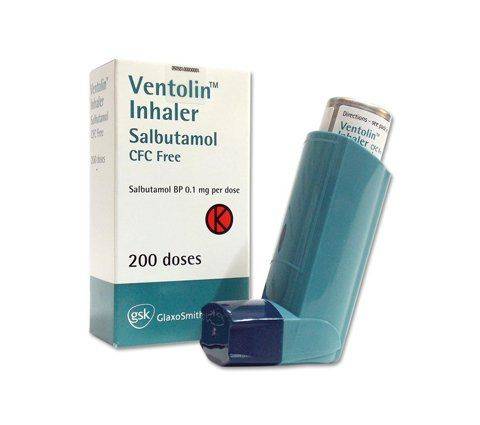
A decoction of Veronica officinalis helps well. Use as a lotion (leave for 40 minutes).
You should not exceed the recommended dose of the drug and duration of use, since diuretics not only increase the frequency of urination, but also remove important microelements and biological substances from the body.
You should not treat bite sites with cosmetic substances: this can cause a burning sensation and disrupt the restoration process of the epidermis, leading to a more serious condition. Do not scratch the skin or take a bath after a bite. There is no need to choose medications on your own and treat healing wounds with alcohol solutions.
General description of insects
The black midge belongs to the order of blood-sucking insects, like mosquitoes and flies. More than a thousand species of these hymenopteran creatures are known in nature. Midges are small insects that look like a fly, but their body size does not exceed 5 mm. They are common on all continents except northern and southern latitudes in permafrost conditions.

Appearance of a midge
Black midges live and breed near sources of fresh water. Very often you can notice a whole cloud of small insects near large bodies of water or even a puddle. Only females are predators. Males feed on nectar and plant sap. Insects hunt people and animals only during the daytime. They live in colonies and very rarely fly alone.
During the bite, the female bites the skin and plunges her proboscis inside. While she sucks the blood, her saliva enters the wound, which contains a substance that prevents blood clotting, as well as enzymes that cause severe itching and swelling. Multiple midge bites can cause a severe allergic reaction, which only doctors and special medications can prevent.
Black midges are a big nuisance for cattle on pastures. During watering, insects adhere to the entire body of the animal, especially areas not protected by fur - ears, eyes, nose. It is in these areas that the blood vessels are located close to the surface. As a result of such a massive attack, the animal may die from suffocation.
What not to do
Treatment of allergies requires a balanced approach, since in addition to reasonable effective measures, there are a number of actions popular among ordinary people that are useless or even harmful. For example, for simulidotoxicosis it is not recommended:
- Apply cologne, perfume and perfumes to damaged areas of the skin, as an allergic reaction may increase due to the components included in cosmetics (preservatives, dyes, flavors).
- Neglect medications.
- Choose your own medications.
It should be borne in mind that allergy symptoms from multiple midge bites in both children and adults can sometimes last for several weeks, and timely measures taken reduce the duration of toxic-allergic reactions in the body and the likelihood of developing life-threatening consequences.
How do bites appear on different parts of the body?
Primary signs of a midge bite appear within a few minutes:
- hyperemia at the sting site;
- soreness;
- noticeable swelling.
With single bites, these symptoms disappear within a few hours. If the damage is more extensive, severe swelling develops as a result of exposure to the poison. A person experiences itching, which forces him to scratch his skin. This leads to wound infection, re-inflammation, and prolonged healing.
Important! The stronger the irritation and itching, the lower the risk of developing general symptoms of intoxication and allergies. This is how the immune system provides a barrier against the spread of poisons throughout the body. In severe cases, signs of general poisoning of the body develop:
In severe cases, signs of general poisoning of the body develop:
- hyperthermia 39-40°C;
- enlargement of regional lymph nodes;
- unstable blood pressure;
- increased heart rate;
- progression of necrosis of the skin and subcutaneous tissue against the background of purulent inflammation.
Symptoms of midge bites on legs
Most often, the lower leg is bitten, since in summer time this part of the body is always open. If a person walked through thick grass in hot weather near a pond, the likelihood that after a short period of time he will notice bite marks on his legs increases sharply.

During the inflammatory reaction, a burning sensation appears under the skin. Pinpoint wounds on the epidermis are located chaotically, it is impossible to see the site of the bite. Sometimes blisters appear, it depends on the immune response.
Swelling of the leg after a midge bite appears after 2-3 hours, the subcutaneous tissue swells not only in the area of the bites, but throughout the entire area. The limb increases in size several times, it hurts to stand on it. This is accompanied by an increase in body temperature and a sharp deterioration in general condition.
In medical practice, cases of amputation due to severe toxic reactions and extensive death of the soft tissues of the leg have been recorded. Rarely does death occur.
Signs of an insect bite in the eye
After a midge bite in the eye, the degree of development of the inflammatory reaction depends on several factors: how poisonous the insect is, the age of the victim, and the state of the person’s immune system.
If an insect stings the eyelid from the outside, a small purple spot is found on the skin. Edema develops quickly; the swelling interferes with the physiological movement of the eyelids. Depending on the degree of swelling, the eyes may be slightly open or completely closed. The eyelid becomes inflamed, hyperemia, itching, and irritation appear. A person wants to constantly scratch his eye, but due to severe pain, which intensifies with mechanical action, this is impossible.
When the mucous membrane of the eye is bitten on the inside, the following symptoms appear:
- burning and pain of the eyeball;
- increased lacrimation;
- redness of the sclera;
- swelling of the mucous membrane;
- sensation of a foreign body in the eye;
- temporary visual disturbances.
Simulidotoxicosis as a consequence of midge attack
Simulidotoxicosis is a local and systemic allergic reaction that develops after numerous midge bites. The severity of clinical symptoms is individual and depends on the response of the body’s protective functions.
Immediately after the sting, a sharp itching and burning sensation develops, the skin becomes red and hot to the touch. Hemolytic poison leads to the formation of intradermal hemorrhages. Rashes of various types appear on the skin ─ urticaria (small pinpoint purple spots), papules (dense nodules in the form of an infiltrate). Swelling then develops, which can spread to different parts of the body.
A severe toxic reaction manifests itself after 5-6 hours in the form of general symptoms:
- rise in body temperature to 39°C and above;
- chills, fever;
- muscle weakness, joint pain;
- headache;
- allergic shock.
12 hours after the bite, nearby lymph nodes become inflamed. If a midge stings in the leg, the inguinal lymph nodes enlarge, in the arm ─ axillary, subclavian, in the eye ─ submandibular, ear, cervical.
On average, a toxic-allergic reaction lasts 10-14 days, sometimes requiring hospitalization and observation of the victim in a hospital.
Causes of allergies
The main cause of allergic reactions is midge saliva, which contains poison. If swelling occurs, it goes away within a few days after the bite. If the body is prone to an allergic reaction, the temperature may rise. If there are many bites, signs of poisoning cannot be ruled out.
Allergies to midge bites manifest themselves in different ways. The reaction can be either immediate or slow. In most cases, swelling and severe redness appear, accompanied by various types of rashes. It is very rare that there are severe signs of an allergy.
Why are black/white midge bites dangerous?
Midges always “hunt” in flocks, waiting for their victims on tall stems of grass, and attack suddenly. At the same time, they do not pierce the skin like mosquitoes, but chew off microscopic pieces of it, then sucking lymph and blood from the wound.

The midge is a small insect that causes a lot of trouble.
It is the insect's saliva that enters the human circulatory system that causes an allergic reaction. It can be of varying degrees of intensity - from mild irritation to anaphylactic shock.
Bite on the head, ear, eye, neck, forehead, lips, arm, leg, eyelids and other parts of the body
Most often, the midge bites the arms and legs, since these places are uncovered on hot days. However, insects can also get under clothing.
The more painful the bite, the more obvious the allergic reaction to it.
A person feels the greatest discomfort if the eye is injured. There is a sensation of a foreign body under the eyelid, tearing, itching, redness. Subsequently, the swelling increases and pain occurs.
Hidden threat
Allergy is a serious threat to the patient’s life (with the development of Quincke’s edema). The danger arises for both children and elders. The result of gnat bites leads to the penetration of active substances into the blood, which causes vasodilation, swelling of the tongue and larynx.
With multiple lesions, anaphylactic shock is possible. It is characterized by severe pain, itching, and increased swelling. There are difficulties during breathing, nausea, and a drop in blood pressure. If the correct measures are not taken, a child or adult will suffocate from suffocation. In rare cases, swelling of the brain occurs with subsequent paralysis.
What does a midge look like?
Midges are small insects whose size does not exceed 3 mm. The color of the body is usually gray. However, when bitten, the midge begins to change its color due to its filling with blood.
They all have wings, even those that feed on the blood of mammals. They have dark-colored patterns on them, which give them a grayish tint.

This insect bites thanks to the oral apparatus present. It consists of:
- fleshy shell;
- “knives” that are inside this very shell;
- upper lip;
- proboscis (it can prick and suck blood).
It is precisely thanks to these “knives” that the midge bites through the skin. During a bite, a person feels pain. At the site of the lesion, the victim may feel a burning sensation and sharp pain.
You may notice red spots at the site where the bites occurred. These are midges that drink blood, which is why the wounds turn red. Moreover, treatment for a midge bite is required.
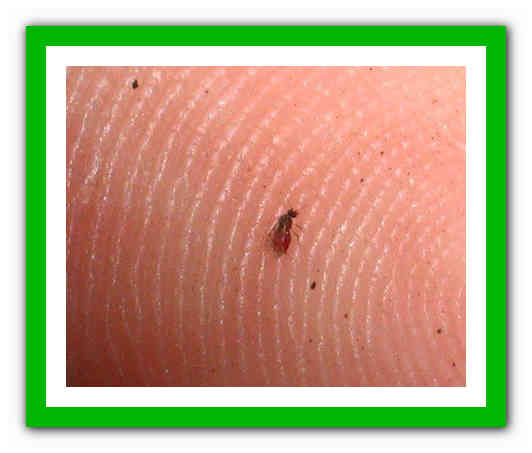
Midges develop from larvae that somewhat resemble white worms or small caterpillars.
